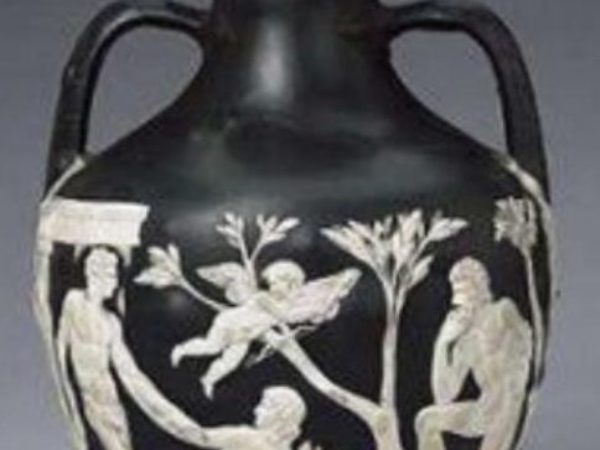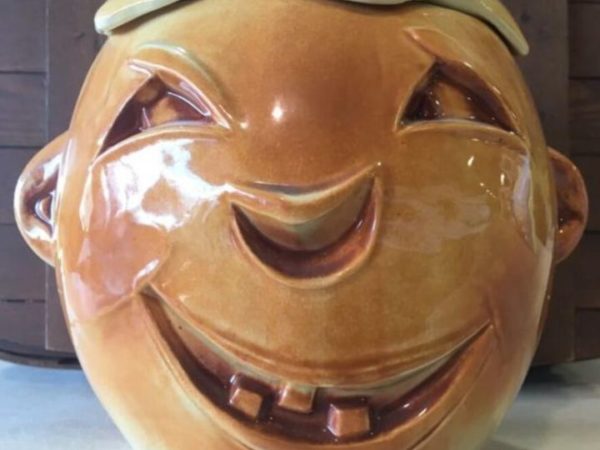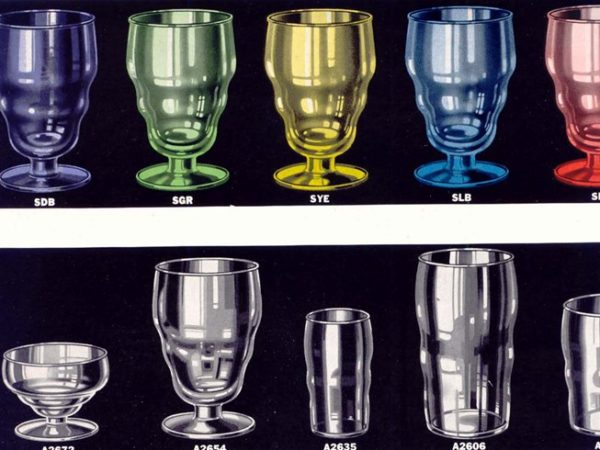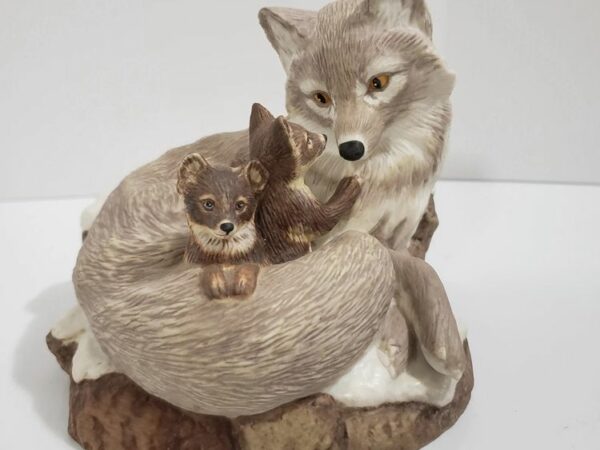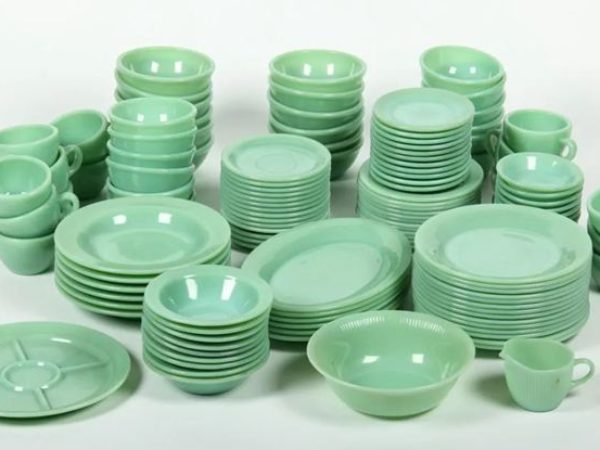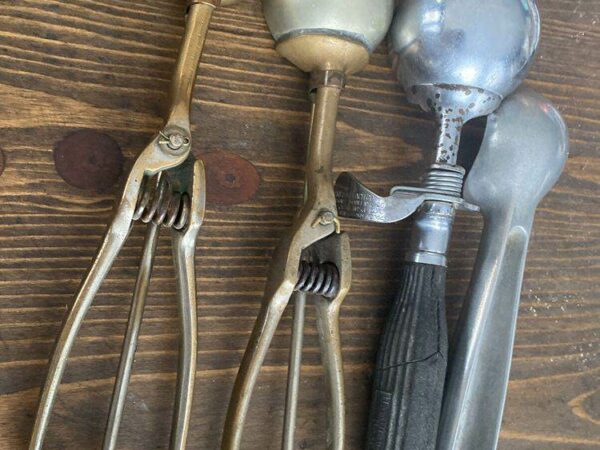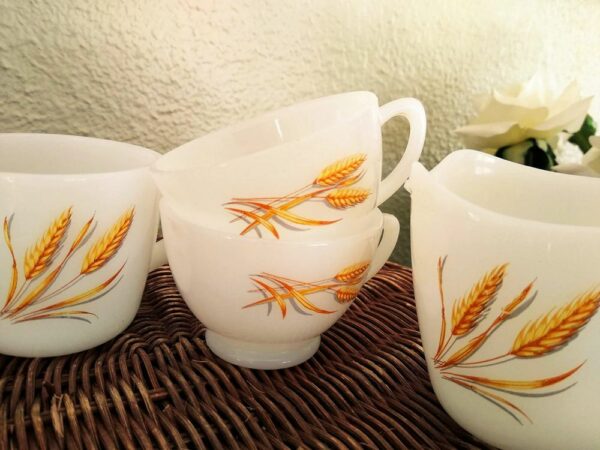The belle of the ball and the fairest of them all is none other than pink depression glass. This glass has the hearts of many collectors and art lovers because of its lovely bright hues and scintillating patterns.
The value of pink depression glass may range from a few dollars to almost $100 for individual pieces. Sets are however more expensive and cost as much as $100 or more.
This guide is your open window to the world of these beauties. Here, you’ll get familiar with the value of pink depression glass and also learn how to identify rare and popular pink depression glass patterns.

Table of Contents
What is Pink Depression Glass
Pink depression glass refers to the warm rosy pink hue of glass produced during the great depression era in America.
It is the most valuable color from the depression glass collection, which debuted around 1929-1939 during the great depression era. It comes in a somewhat warm rose attractive hue, and their ability to instantly lighten up space made them quite famous.
Depression glassware, in general, served as a safer and cheaper alternative for the American populace when hand-made cut glass became expensive due to economic difficulties in America.
The glass pieces were used as collectibles and given away to cereal lovers. Hence, most of the pink depression glassware people had on their shelves; they got for free.
This unique and bright glassware added comfort and elegance. It lifted people’s moods when they entered their homes with its futuristic aesthetics that didn’t need them to break the bank before owning one.
How to Identify Pink Depression Glass Patterns
Over the years, thousands of reproduction pieces have flooded the pink depression glass market. Making it hard to spot authentic ones and easy to fall prey to cheap imitations.
This section of the guide is here to prevent these unfortunate occurrences.
Consult an appraiser
Observing this major step is necessary when determining the value of antique or vintage pieces. Appraisers have a wealth of experience, and they are your best bet at getting complete information on pink depression glass.
Check these appraisers out to book a consultation on your pink depression glass.
Check for intricate features
Most depression glasses are patterned, and they usually come in geometric shapes and cuts. Depression cups have geometric and floral designs inscribed into pieces. Another common feature are opalescent trims.
A close study of the edge of pink depression glass pieces will have the color change from a colored hue to clear.
Examine the thinness of the glass
Due to the low availability of cash and materials, pink depression glass was very thin, especially the edge of the glass. As a result, they’re the thinnest and the most delicate pieces.
This feature makes it very prone to chipping and cracking; ensure to check the edges for chips as this is a sign of authenticity.
Check trusted books, websites, and online Resources
For the record, there’re about 92 various patterns recorded for depression glass pieces, and most times, logos and stamps are usually not on these pieces.
To update your information on them, consult reference books and websites to get familiar with the patterns and necessary information. This section packs more information on books, websites, and online resources with information on pink depression glass.
Get familiar with popular patterns
American Sweetheart and the Cameo pattern are very popular patterns of pink depression glass. The sweetheart patterns are popular with depression bowls, with the center decorated with elegant paisleys and curlicue designs.
Cameo patterns look like rows or strings of beads laying around each piece, and you can find this in cocktail and lunch sets.
Check for Markings
To identify the authenticity of the pattern on your glassware, check for markings on the piece. You can do this by turning the glass over and checking the base or the edge of the glass for the company’s logos and embossments.
How to Determine the Value of Pink Depression Glass
Pink depression glass, like its other colored peers, has been around for almost a century, representing an integral part of American history, most notably its resilience.
Learning how to determine the value of unique pink depression glass should you ever intend to sell off your collection or purchase new pieces. Here’re the detailed steps of things you must do.
Study the patterns
For pink depression glass, the primary determinant of its value is in the pattern. Therefore, to determine the true worth of the piece, you must have carried out the necessary background checks on the patterns and even the piece.
Look carefully for any extra inscriptions that may provide additional information on your product. If you can’t find a trademark or stamp to help, the uniqueness of each pattern is enough proof.
Here’s a video to help you identify the different patterns on pink depression glass.
Identify the piece
Popular pieces used for daily purposes, such as candy bowls, wine cups, and salt shakers, are not of so much value to collectors.
The rare pieces, especially those in unusual shapes, sell for an insane amount of money.
Examine the condition of the piece
No one would drop a cent for ashy-looking, chipped off, cracked, or faded glass.
Although some come with original flaws like bubbles, straw marks, and raised patchy spots from the production stage, these flaws shouldn’t affect the value of your glassware because they’re still original.
Even minor issues like flea bites due to aging, long storage time, and minor scratches due to prolonged use don’t affect the price much.
Understand market factors
Every item with intrinsic value is always at the mercy of market factors (Demand, Supply). This means that as rare or unique a piece is, if it isn’t a popular name on the market, it may not command the needed demand, leading to a significant loss.
Everyday pieces are usually the luckiest in cases like these. They’re popular, highly in demand, and on the lips of collectors. So, do the needed research to know the perfect time to push an item into the market.
Visit trusted antique websites
These online shops and platforms specialize in antique stocking pieces like pink depression glass, making them a great space to check out values and prices for your stuff. Sites like Rubylane, GoAntiques, and 1stDibs are your best bet.
Attend auctions
The prices at auctions are usually higher compared to every other place. This is because the rarest, most unique, and highest quality pieces of this glassware have been gathered for an auction even to take place, hence the exorbitant prices.
Paying a visit to one or more of these auctions will help you understand the value and how to set the prices of your glassware.
Here’s a video explaining the possible values of pink depression glass.
10 Most Popular Depression Glass Patterns
We’ve compiled a list of the ten most common depression glass patterns you’ll likely find in antique stores and auctions across states in the United States. These patterns are highly collectible and eyed by the high and mighty glass collector sphere.
Pattern Name |
Release Date |
Company Name |
The American Sweetheart |
1930-1936 |
Macbeth-Evans Company |
The Anchor Hocking Moonstone |
1942-1946 |
Anchor Hocking Company |
Sunflower Pattern |
1934-1941 |
Jeanette Glass Company |
Royal Lace Pattern |
1934-1941 |
Hazel Atlas Glass Company |
The Cameo Pattern |
1930-1934 |
Anchor Hocking Company |
The Mayfair Pattern |
1931-1937 |
Anchor Hocking Company |
The Patrician Pattern |
1933-1937 |
The Federal Glass Company |
The Waterford Pattern |
1938-1944 |
Anchor Hocking Company |
The Princess Pattern |
1931-1934 |
Anchor Hocking Company |
The Cherry Blossom |
1930-1939 |
Jeanette Glass Company |
1. The American Sweetheart
Release Date: 1930-1936
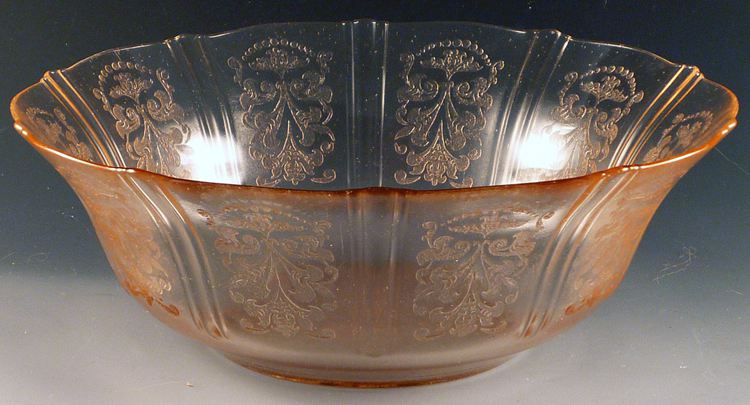
This pattern was designed by Macbeth-Evans company between 1930-and 1936. The design featured floral designs and soft scrolls in various colors like white and pink.
It’s a classic design, and soft pink hues have made it one of the most popular patterns of the Great depression period. It is still highly sought after even after almost a century.
2. The Anchor Hocking Moonstone
Release Date: 1942-1946
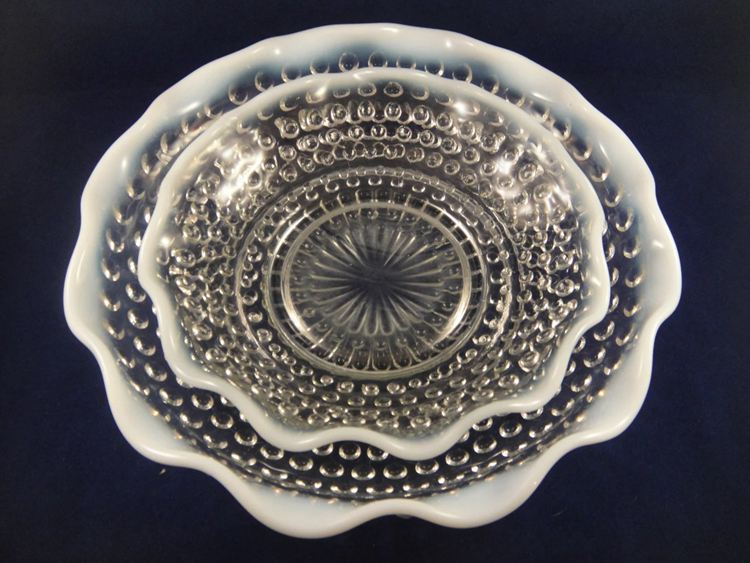
This design is as beautiful as the name implies and was produced by the Anchor Hocking Company from 1942 to 1946, just after the great depression era. The glass is mostly clear with white opal glass at the edge of the glass and tips of the hobnails.
The moonstone pattern came in a small dinnerware set, plates, cups, creamer, salt shaker, and goblets. It is a much later version of the Hocking glass hobnail pattern rolled out between 1934 and 1936.
3. Sunflower Pattern
Release Date: 1934-1941
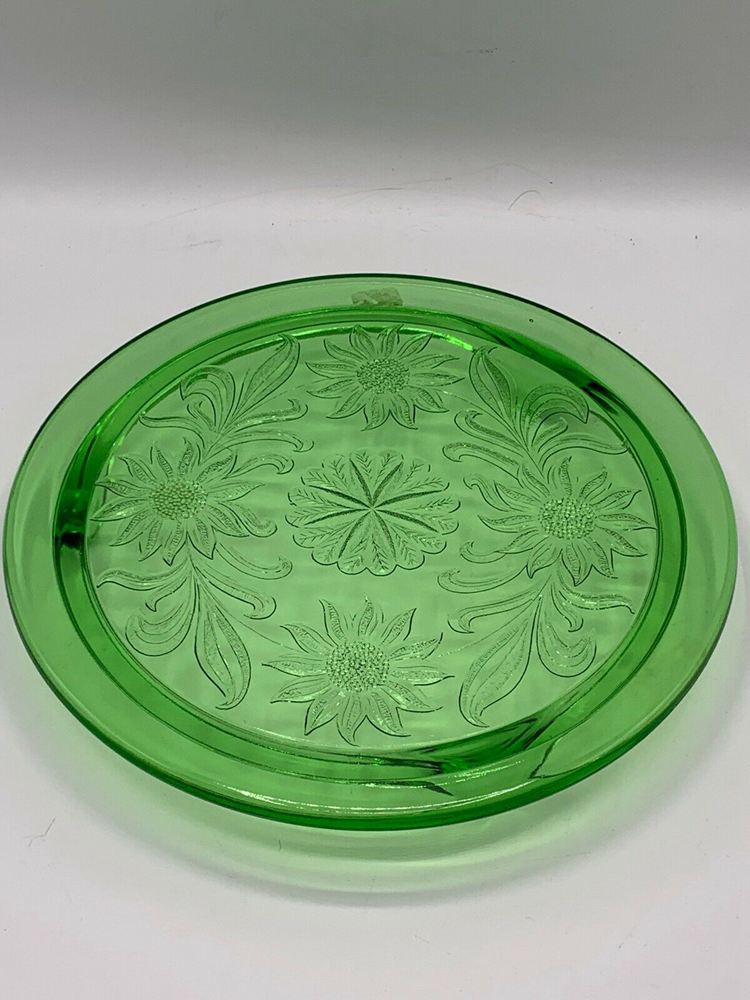
This floral design from the stables of Jeanette Glass has sunflower features all over the body with a large medallion at the center. It was produced between 1934 and 1941 and came in various colors like royal blue, transparent green, pink, and multiple shades.
4. Royal Lace Pattern
Release Date: 1934-1941
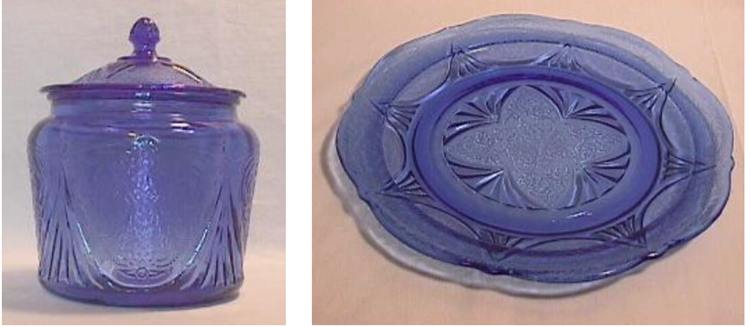
Hazel Atlas introduced this design from 1934 to 1941 as a refined, exquisite twist on the usual simple glassware shapes that have won many hearts. This makes it the most collected depression glass pattern.
They first came in shades of pink, transparent green, and crystal. However, while the company still existed, it kept producing the crystal pattern even after discontinuing others. Hazel Atlas produced the signature blue glass only between 1936 and 1941, making it more valuable than the other colored patterns of depression glass.
The famous blue glass emerged from plenty of leftovers from the Shirley temple sets produced for General Mills, which had no interested buyer. So the company melted the glass and passed it through the Royal Lace molds; the Ritz blue became an instant success.
5. The Cameo Pattern
Release Date: 1930-1934
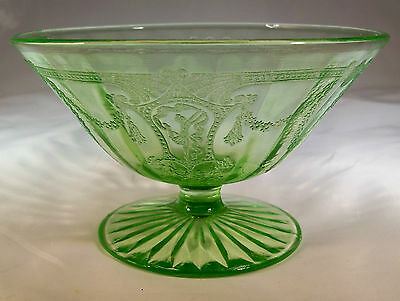
The Anchor Hocking Glass Company introduced this line, also known as the Ballerina or Dancing Girl pattern, from 1930 to 1934. It was one of the most popular patterns rolled out by the company in its history and the earliest for depression glass.
They exist in shades of green, yellow, pink, and clear glass. These colors are common and readily available for purchase, with the most popular being green. Still, the pink and yellow hues are particularly hard to find due to reduced production.
6. The Mayfair Pattern
Release Date: 1931-1937
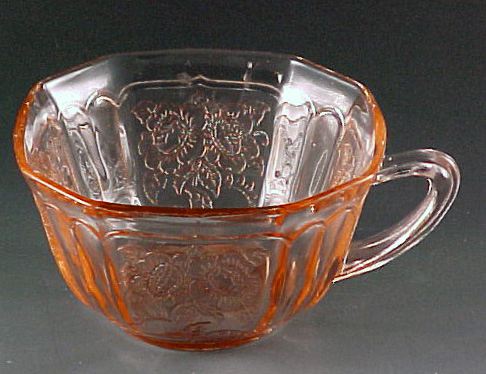
Another one from the stables of Anchor Hocking Glass Company, the pattern fondly called “open rose,” was created in pink, yellow, green, and blue. The pink (Also known as Flamingo) is the most popular and commonly found.s
The blue pieces of this pattern are scarce as there are no other hues like it in depression patterns. This makes it highly desired by collectors and antique glass lovers; they’re worth much money.
7. The Patrician Pattern
Release Date: 1933-1937
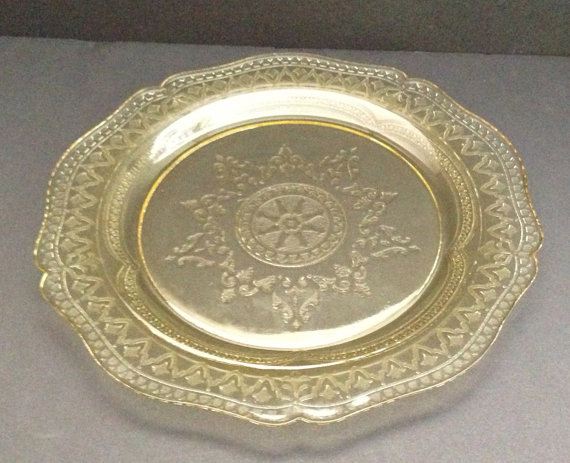
This pattern is often called the “Spoke Pattern,” manufactured by the Federal Glass company from 1933 to 1937. This pattern came in green, pink, amber, and crystal. These days, only pink and green are highly desirable.
The central spoke pattern is circled by a lacy pattern and a triple design on the rim. It has a pentagonal shape with five glances, even though people confuse it with six at first glance.
8. The Waterford Pattern
Release Date: 1938-1944
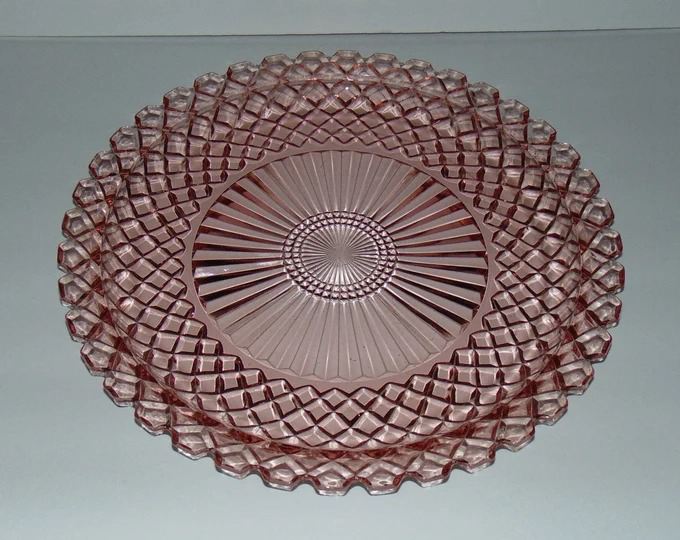
Introduced in 1938 and running till 1944, this elegant faceted pattern from Anchor Hocking comes only in crystal and pink. It covered a long-range of glassware, from salt shakers to cereal bowls and cups in this breathtaking design.
9. The Princess Pattern
Release Date: 1931-1934
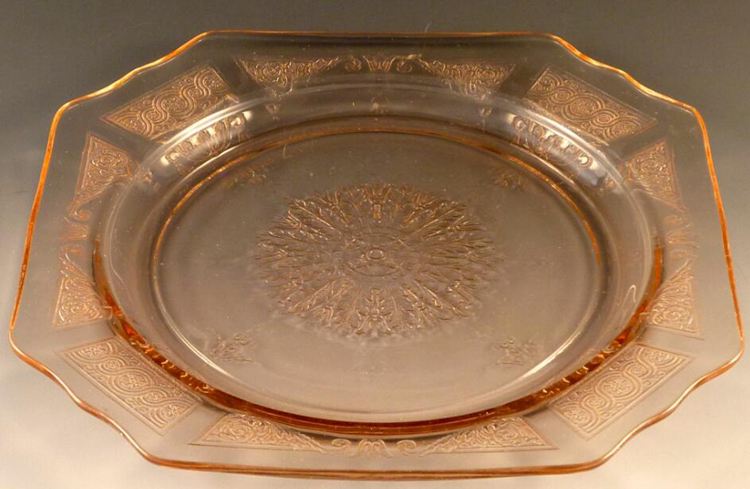
The pattern debuted in 1931-1934 by Anchor Hocking Glass Company, a popular depression glass industry renowned for making popular patterns.
The princess pattern came in green, pink, and even topaz. They were held dearly by collectors due to their scalloped edges, which were very popular.
10. The Cherry Blossom
Release Date: 1930-1939
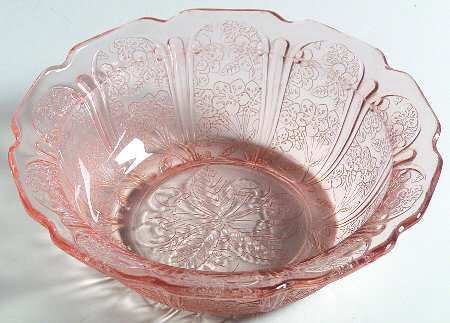
Introduced between 1930 and 1939, this pattern has shaped just like the name Cherry blossoms and flowers. The Jeannette glass company produced it in pink, green, opaque blue, and clear shades.
Rarest Pink Depression Glass Patterns
Below are five patterns we’ve handpicked for you that you may not find anywhere else.
Pattern Name |
Release Date |
Company Name |
Star of David Pattern |
1960-1999 |
Anchor Hocking Company |
Stippled Glass Pattern |
1940 |
Westmoreland Glass Company |
Button and Bows Pattern |
1947-1949 |
Jeannette Glass Company |
Rosemary Glass Pattern |
1935-1937 |
Federal Glass Company |
The Old Colony Glass Pattern |
1935-1938 |
Anchor Hocking Company |
1. Star of David Pattern
Release Date: 1960-1999
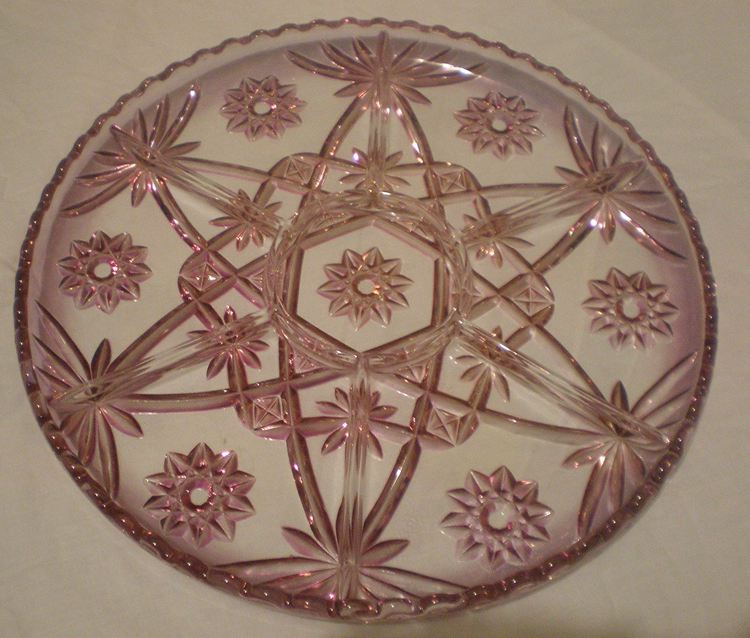
The majority of the pieces with this pattern were discontinued in 1978. However, the creamer, cruets, sugar, and vases were still available until 1997.
Wondering where the name came from? The star of David was inspired by the Jewish star (it had one or a few centralized eight-pointed stars) and was produced by the Anchor Hocking company.
2. Stippled Grape Pattern
Release Date: 1940
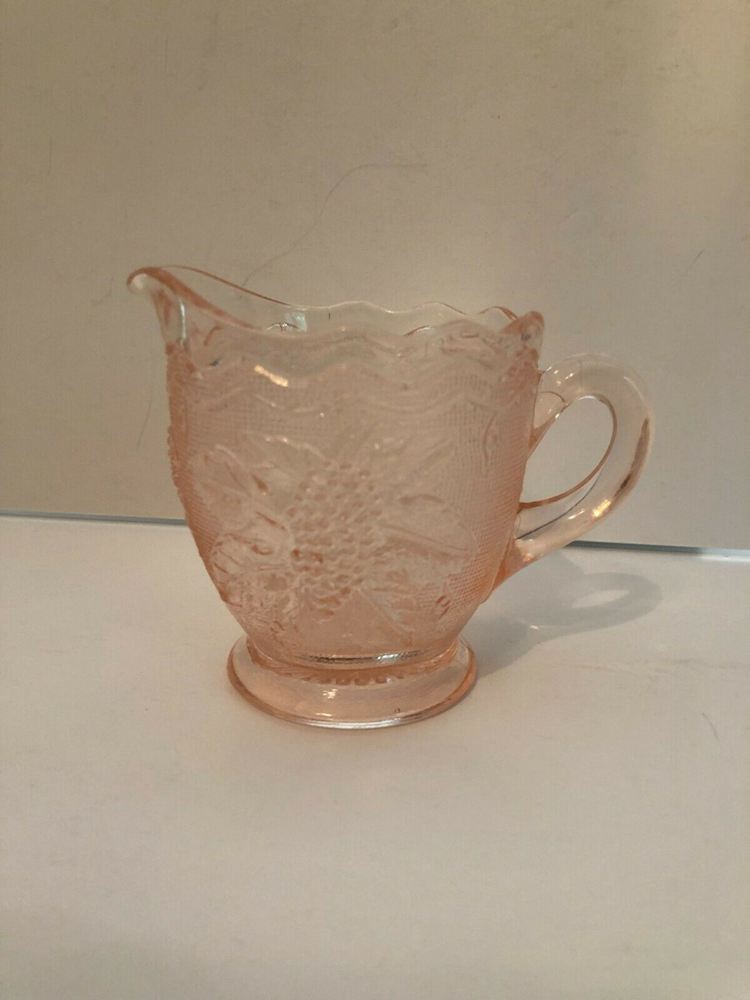
The Westmoreland glass company produced this pattern in 1940; it’s usually called Woolworth green. However, it exists in other colors, like pink. The pattern features grapes and leaves in its designs and glows radiantly when illuminated.
3. Buttons and Bows Pattern
Release Date:1947-1949
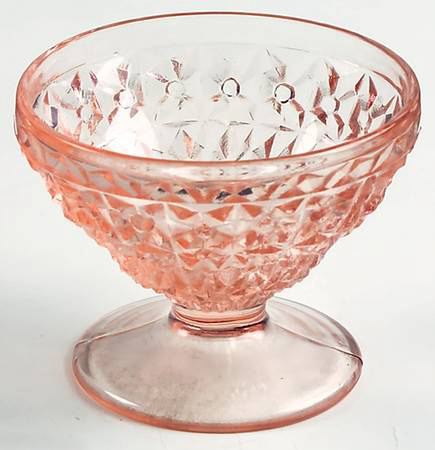
Also known as the holiday depression glass pattern, they exist primarily in pink hues, but a handful of crystal pieces exist. The pattern was produced by the Jeannette Glass Company and features raised spots in the form of buttons with bow details.
4. Rosemary Glass Pattern
Release Date: 1935-1937
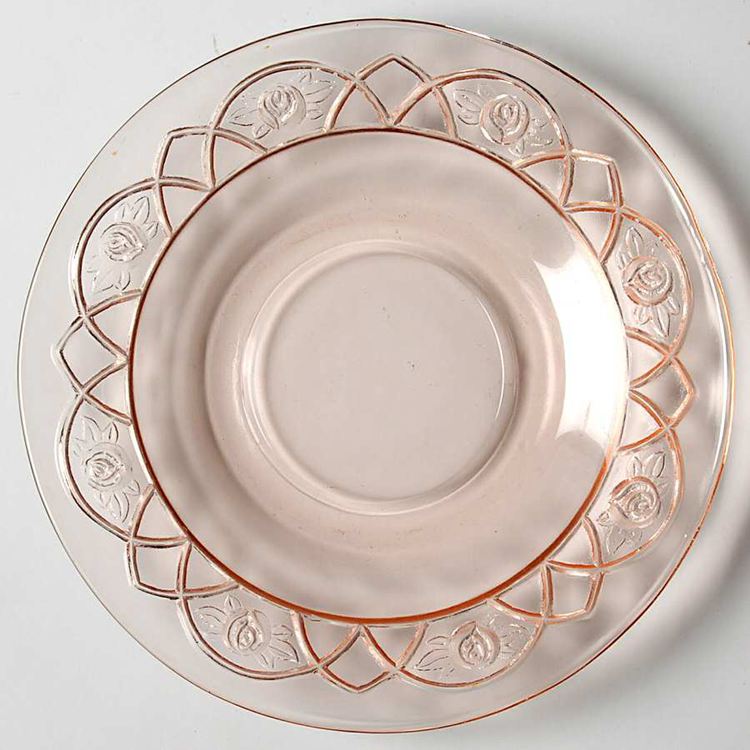
Very similar to the Mayfair pattern and from the Federal Glass company. The pattern has arches and two open roses with a much larger open rose design at the center that mimics the two roses found under the arches at the edge.
Unlike Mayfair pieces with the scalloped edge, rosemary has a smooth edge. The amber color was the most produced, so much that it earned the “golden glow” alias. The pink shade, also known as Rose Glow, was also made but scarce and most likely a limited edition.
5. The Old Colony Glass Pattern
Release Date: 1935-1938
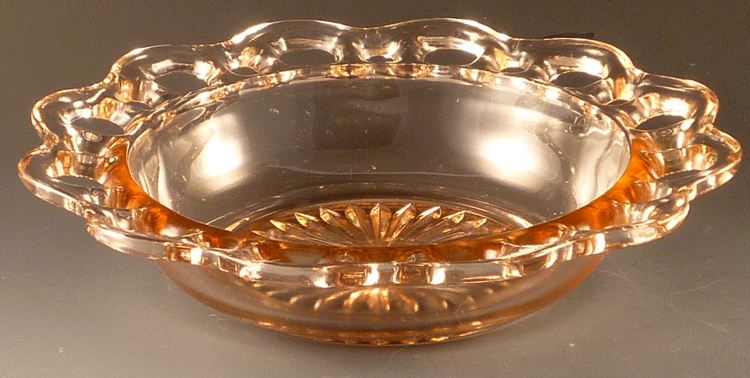
Also called the open lace or lace edge pattern was created by the Hocking glass company. Hocking mostly made it in pink and a few in green and topaz yellow.
Identifying the Different Kinds of Pink Depression Glass
Consider this a mini-gallery as we introduce you to the different kinds of pink depression glass. It might interest you that the glass comes in different shapes, forms, and sizes and are helpful for numerous purposes.
Name |
Release Date |
Company Name |
Pink Depression Candy Dish |
1987 |
Indiana Glass Company |
Pink Depression Glass Bowl |
1930 |
Anchor Hocking Company |
Pink Depression Glass Pitcher |
1937-1942 |
Anchor Hocking Company |
Pink Depression Glass Vase |
1929-1935 |
Paden City Glass Company |
Pink Depression Goblets |
1940 |
Arcoroc France Company |
Pink Depression Candle Holders |
1920 |
U.S. Glass Company |
Pink Depression Glass Cake Plate |
1930 |
Jeannette Glass Company |
Pink Depression Glass Candy Dish
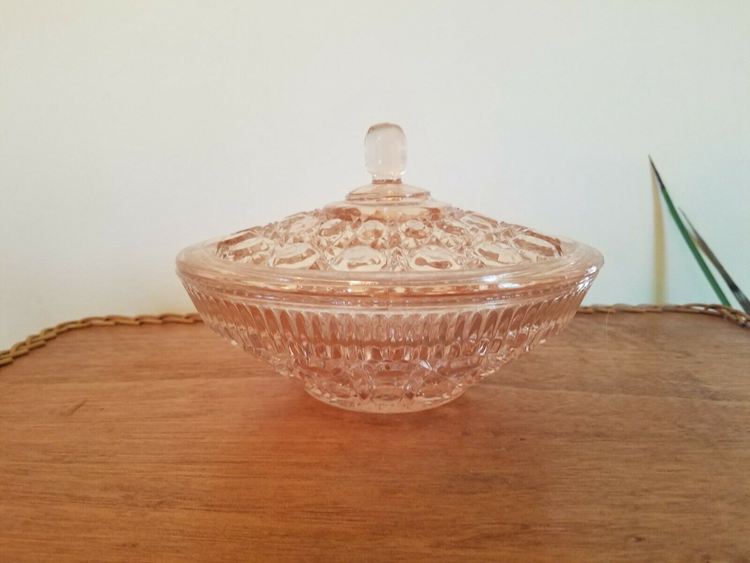
Here we have an antique Indiana glass company pink depression candy dish in the Windsor pink (peach ballad) pattern produced in 1987. This is an excellent container for keeping your sweet candies. It’s also a pleasant decorative piece.
Pink Depression Glass Bowl
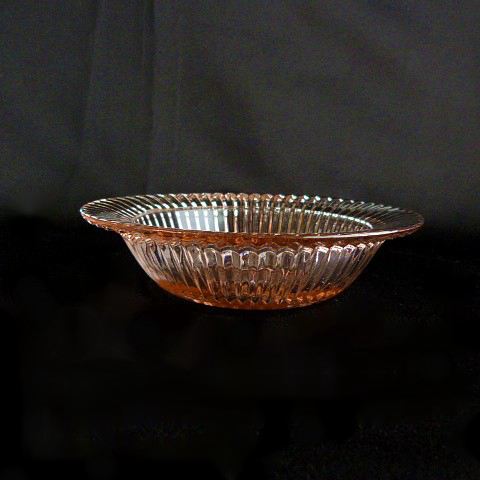
Pretty in pink is the Queen Mary pattern. The Anchor Hocking Company produced this cereal bowl in the 1930s. Its sharp, clean ribbed glass sparkles brightly under the sunlight.
Pink Depression Glass Pitcher
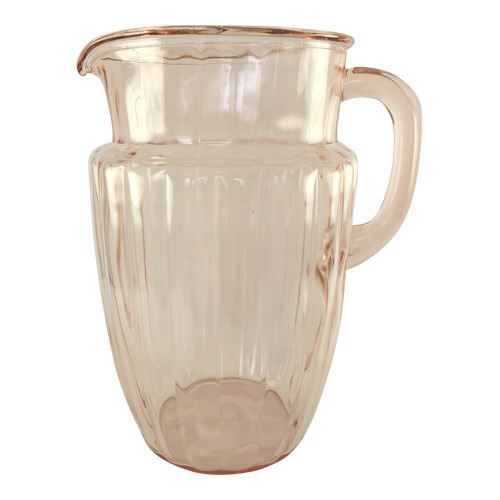
This depression glass pitcher in a soft pink hue and the Pillar Optic pattern was produced by the Anchor Hocking glass company from 1937 to 1942.
Pink Depression Glass Vase
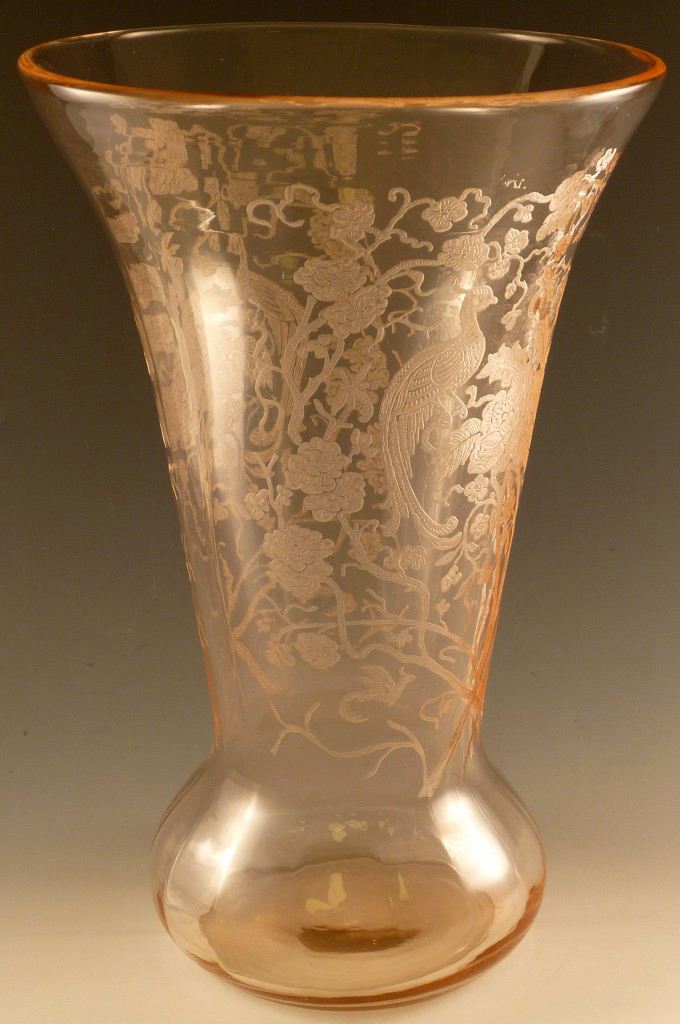
The peacock and wild rose pattern vase was made by Paden city glass company in a hue called Cheriglo, and it ran from 1929 to 1935. It is the perfect container for your flesh flowers that instantly adds charm and beauty to any table.
Pink Depression Glass Goblets
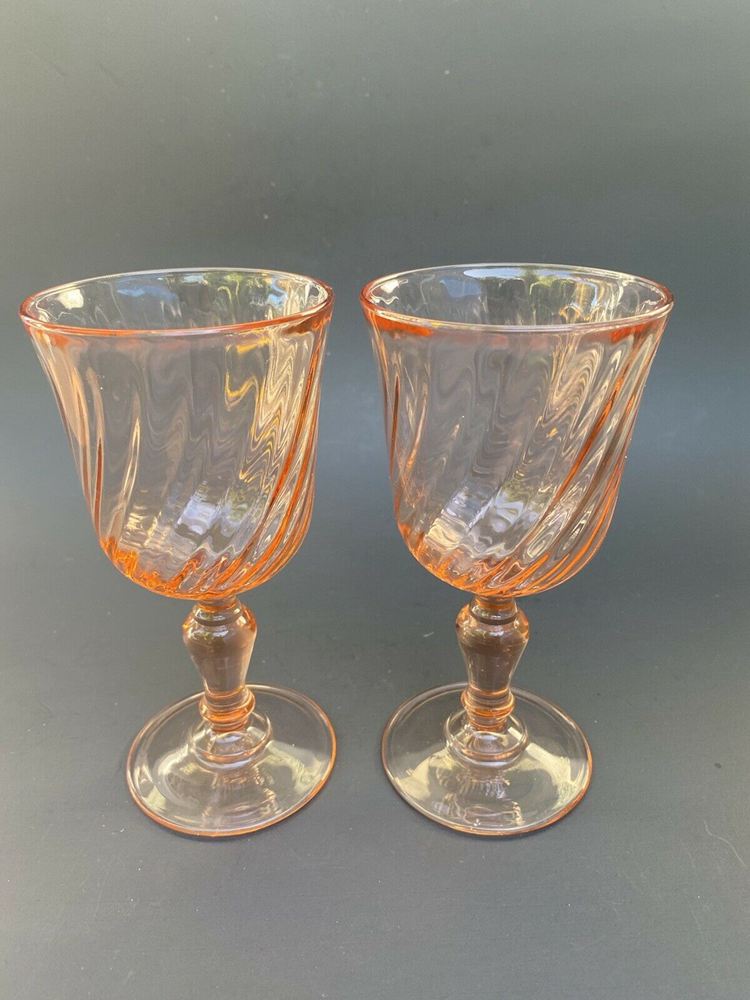
A pair of goblets in the optic swirl pattern was produced in France by the Arcoroc France company in the 1940s.
Pink Depression Glass Candle Holders
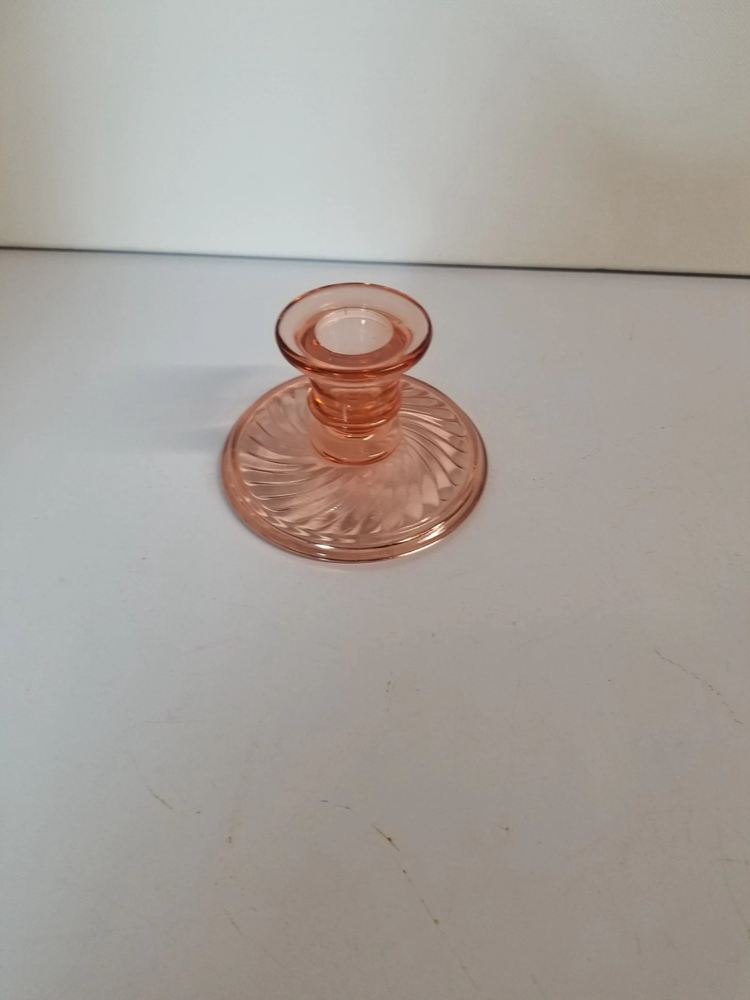
A candle holder in the U.S. Swirl pattern produced by the U.S. Glass company in the 1920s. Think of it as a dual-purpose, functional item that decorates and illuminates your space.
Pink Depression Glass Cake Plate
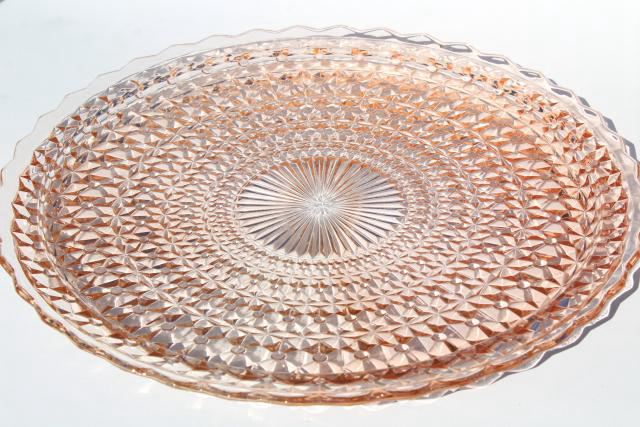
A Jeannette button and bow pattern cake plate produced in the 1930s will add glamor and the perfect ambiance to any cake serving.
A Guide to Collectors
A golden piece of advice we’ll give to depression glass collectors is to make sure you collect pieces that are not only unique or rare but ensure you love whatever type of depression glass you choose.
Endeavor to keep them with the utmost care, away from dust, grease, and reach of wandering hands. We’ve curated a list of places you can find valuable pink depression glass below.
Here is a list of possible places to find pink depression glass quickly and very conveniently.
- You should begin your search by looking inwards. i.e., with family and friends. It’s not strange that older people tend to have these pieces, and they’re original. But, of course, they’ve been around longer than we ever have and even experienced some of these events.
- Flea markets, yard sales, and estate sales in your neighborhood are great spots to find pink depression glass. So, be on the lookout for the next big yard sale, as you may hit it big there.
- Shop them online on websites like Etsy, eBay, and Amazon. These online stores have separate sections for antique stuff, which helps your search faster and easier.
- There’re also select auction websitesto find pieces of pink depression glass and, more importantly, quality ones.
Printed guides on depression glass
Additionally, you can check available printed guides on pink depression glass.
Below are printed works/guides on everything depression glass, from their characteristics to their values and varieties available.
- The Pocket Guide to Depression Glass & More by Gene Florence is available for purchase on
- Here’s another exciting guide for you atWalmart, titled Depression Glass: Collections and Reflections: A Guide With Values
- The Depression Era Glassware: Identification & Value Guide by Debbie Coe and Carl F. Luckey is available on com
Additional online resources
Here’re additional materials that may help you search for pink depression glass and other available varieties.
- This piece by Martha Stewart canalso be helpful in your
https://www.marthastewart.com/8036745/collecting-depression-glass.
- Check out this bookby Doris Yeske for extra insights on how to quickly identify pink depression glass patterns.
Parting Words
We believe we’ve set the ball rolling for you to create a hobby, purchase, or start collecting pink depression glass. However, here’re a few tips to bear in mind before you begin.
- Pink depression glass is very thin and can chip easily; hence handle them with utmost care. Also, understand that not all chips are a sign of awful condition; some happen due to aging and years of use.
- Look out for reproductions; they’re usually scratch-proof and with an unreal flawless finish. An original pink depression glass will always have signs of wear and raised spots from production.
